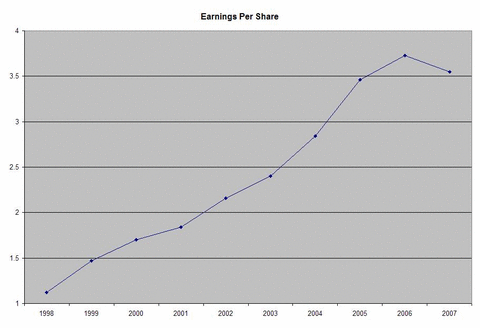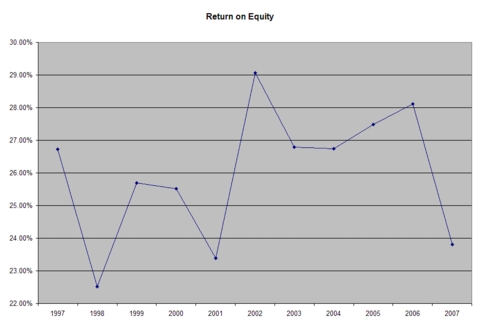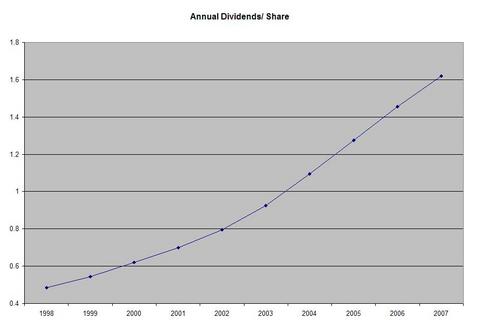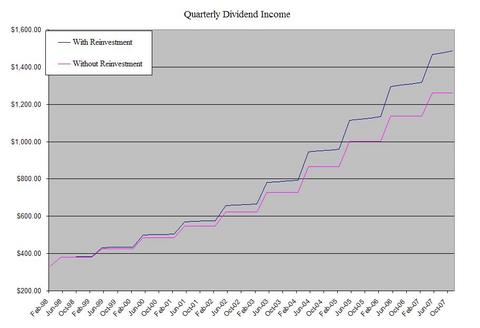Alternative Streams of Income
I am always looking for ways to increase my income. I have a good paying job, which required me to work hard at school and spend several years of my life learning to juggle multiple activities successfully. I like my job but I think that I could always do better money wise. There’s always the possibility that I could be laid off because the company is not doing ok, or because I do a lousy job and thus my main source of income would be cut off. In order to avoid this, I think that I should have multiple income streams that would make me relatively independent in the extreme case that one of them dries up. I was brainstorming and I came up with several alternatives. They are not ranked by importance, and the ranking is not representative of their relative importance.
1 .Prosper/Lending Club lending and referrals
I have already started experimenting with peer to peer lending on Prosper and Lending Club. I am looking to lend money to people with the best credit ratings possible, who are homeowners, and have a low debt to income ratio and who have a full-time job. In addition to that I would only lend to people who have a credible reason for getting credit. I would not lend to someone who says that they want to re-invest in prosper or a triple A borrower who wants to consolidate credit cards by applying for a 20% loan. Since I am looking for the safest, highest rated borrowers possible, I think that my returns would be somewhere close to 8-10% annually. I am aiming to refer more people to Prosper or Lending Club; I would receive a $25 dollar sign-up bonus for every lender or borrower that I refer. In addition, once the lenders that I refer bid on loans, they would automatically receive a $25 dollar bonus as well. If you have never signed up for those and you are exploring the opportunity for higher returns on your money than a bank deposit, there is a link to the right for applying at Prosper as a lender. If you need a referral for lending club, e-mail me at
sagitarius_d@yahoo.com
2. Credit Card Arbitrage
Another way of creating passive income is by applying for no interest, no balance transfer fees credit cards, getting a check against your available balance and then putting it in a CD or high-yield savings account. This was a nice way to generate some extra income when the interest rates were going up. As the interest rates are dropping across the board, this strategy is losing its appeal. The main drawbacks were that in order to make $1000 with a 5% CD or savings account, you had to have a credit card balance of about $20,000. Credit card companies do not offer high credit limits like that on newly minted credit card holders. But if you open several credit cards at once, you might be able to pull this through. Another negative from this strategy is that your credit score would be negatively affected because you have high credit card utilization ratio.
3. Interest on CD’s, savings,
Putting your money in a CD or a high-yield checking account is the safest way possible to generate passive income. The money that you deposited is FDIC insured up to $100,000 for taxable accounts and up to $200,000 for IRA’s. You could buy CD’s with varying maturities ranging form 7 days do 20 years. Your interest rate is fixed and you could choose to compound the payments back into the CD or simply spend it. The only drawback is that during a high-inflationary environment your long-term fixed income instruments would lose purchasing value very fast. You could also buy bonds, which are not FDIC insured and which carry a higher risk, but also a higher yield. Fixed income is taxed as ordinary income; if you are in the 35% tax bracket, even a 5% yield means that you effectively make only a 3.25% after tax return. Check out the
Best CD Rates from BloggingBanls.
4. Stock dividends
This is (or will be) my bread and butter passive income source. I am projecting to earn about $900 - $1000 from dividends this year. My passive income from dividends should reach easily about $ 8000 annually by 2014. I could argue that stocks that have a history of paying regular dividends offer the best real return on investment possibilities out there. I am focusing this blog mainly on stocks that tend to increase their dividend payments every year which is a good inflation hedge for ones dividend income. Even if the company doesn’t increase the dividend every year, but never cuts it and can achieve average dividend growth over time I would still consider it a good source of passive income. Basically once you buy a dividend aristocrat, you get paid four times a year. In addition to that you are rewarded for your smart investment with a raise year after year. Your income has a preferential tax treatment. You can reinvest your profits back into company stock, thus taking advantage of the power of compounding and the power of dollar cost averaging. You could do even better by spreading your risk across different sectors or even buying one of the many dividend etf’s out there. Stocks typically outperform most other instruments over the long run. They provide good long-term returns and are the best hedge against inflation. Dividend aristocrats have outperformed most stocks over the past 18 years. So basically you are getting the best of both worlds. Even if stock prices stay low for years, dividend investors still get paid in the form of dividends. They can choose to buy more stock at depressed levels or spend the money. I believe dividend stocks to be the perfect source of truly passive income. Once you set up your portfolio of 20-30 dividend achievers and make sure that dividends are automatically reinvested, you can go live in a desert island for 20-30-40 years. Come back and you will be positively surprised by the amount of money you have.
5 .Employer stock participation plan and 401K matching contributions.
Most people are not aware of it, but many companies offer their employee’s employer stock purchase plans. Workers have a certain percentage of their paycheck deducted and invested into company stock. The best part is that company stock is purchased at a discount, which typically ranges around 10-15% of current market prices without paying any commissions. Some plans have minimum holding periods although most don’t have any. If it doesn’t one could simply invest the maximum portion of their paycheck into company stock, and then sell it on the open market, thus realizing a risk-free gain.
Another way to get free money or a passive income stream is if your employer provides matching 401k contributions. Typically employers match 100% of the first 3%-6% of employee’s contribution into their retirement accounts. If you make $50,000 per year and you contribute 5% of your pre-tax pay that is matched at 100% from your employer, you are not only getting $2,500 in free money from your employer, but you are also saving a ton of taxes.
6. Signing up for bank bonuses through opening checking/savings accounts
I have signed up for several bank accounts over the past year, making some easy dollars. This strategy would not make you a ton of money, but it is also relatively risk free. One could make anything from 25 to 200 dollars for opening a checking/savings account. You should always read the fine print though, because you don’t want your bonus being eaten from commissions, charges and other things like that. Unless the new account offers you something much better than the checking/savings account that you have been previously used for years, I would close it after six months to a year.
7. Income from blogging.
My e-mail is constantly bombarded with advertisements guaranteeing $100 dollar per day income from ad sense systems. I am not going to lie – I think that blogging is a nice way to make a couple of bucks per day and there are people who can do it full-time and make thousands per month. But your income form blogging should be diversified as well into different advertising venues like ad sense, bidvertiser and many other programs out there. Since the inception of this site, I have averaged 80 visitors per day, making around $1 daily from advertising.
8. Filling online surveys
This is yet another way of making money online. You look for surveys which you qualify for, and earn money. Just like any other form of making money online, you earn most money through referring others. If you are interested in filing online surveys, you can register for inboxdollars.
9.Rental Properties
Another form of passive income could be obtained from renting out properties to tenants. Lots of people rent because they are unsure about their lives in the short-term, can’t afford to buy a house or for any other reason. Some landlords hire a manager to manage the day to day operations of the properties. But if your property company is on a scale that cannot support hiring a property manager, then you most probably have another full time job on your hands. One can make money from rental properties but there are a lot of things that will need to be fixed or replaced. It all depends on what your tenants are and what type of people they are. If the cash inflow from your rental property (rent payments, tax breaks, depreciation tax breaks) meets or exceeds the cash outflows to the rental property (mortgage payments, fixing stuff, property taxes, manager salary) you will have achieved alternative source of income. Another nice part about owning real estate is that you can put no money down, and borrow the entire amount to buy your rental properties from the bank, assuming that you can afford it even if you don’t find tenants at all.
10. Investing in Timber
I have recently stumbled upon several websites which discuss investing in timber as an alternative investment class. I have no idea how to invest in trees, and do not know how credible these sources are. However I do know that some major college endowment funds have been invested in “hard assets” such as timber. You might want to check it for yourself, but planting a tree, not doing any significant work and harvesting it in 20-25 years for a 12% annualized gain sounds like a nice long-term investment to me. I would try to make an analysis of investments in timber over the next couple of weeks. in order to determine the pros and cons of this strategy as well as find out the best way to implement it.
11.Have a part-time consulting job with flexible hours
One could always trade their free time after work for a part-time job with flexible hours. Since I am an accountant by education, I could easily file people’s taxes during busy season. I would interact with others, try to outsmart the taxman by looking for any deductions that my client is eligible for and most importantly see how much money my clients are making.
Those are the /alternative passive income streams for which I have thought of about implementing/ or implemented. They are in no way representative of all the possible income streams out there. If done improperly though, I am sure that they can become alternative sources of outflows. So always do your own risk assessment before dedicating your time to any business activity.
Relevant Articles:
-
Dividend Aristocrats List for 2009
-
Dividend Aristocrats
-
Best Dividends Stocks for the Long Run
-
Best High Yield Dividend Stocks for 2009
-
Best CD Rates


























 After a while the price started decreasing, and I happily reinvested my dividends, realizing that now I would receive a higher yield for my investment at the lower prices. Instead of yielding 10%, the stock was now yielding 12%. Pretty soon though, the dividend was cut, and the yield decreased to 10% again. I was worried a little bit, but I decided that with a 10% yield I would be able to recover my losses over time even if the dividend was cut by a little bit again. For a while it did seem to me that I was going to break-even as I kept reinvesting my dividends and the price was slowly but surely climbing to the level at which I made my first investment. Then disaster strikes again - the dividend was cut and the stock fell again. I was starting to get worried, because I was getting a good yield, but my capital gains were pretty dismal. I checked the historical monthly dividend payments at yahoo finance and it seemed that the company actually had a long-term negative dividend growth. The monthly payments had been steadily decreasing ever since the fund was open for investors. In addition to that the price had been in a decline for some time. I finally realized that super high-dividend yields of over 6% annually are not sustainable in most situations. I also learned that if I would buy a stock just for the dividend payments, I should only buy companies/shares that have a solid history of raising their dividends in both bull and bear cycles over the years. In addition, the company should be a fundamentally sound business, which can afford to pay dividends even if business had a slow year. I also learned that I shouldn’t be chasing a stock simply because it offers an attractive very high yield.
After a while the price started decreasing, and I happily reinvested my dividends, realizing that now I would receive a higher yield for my investment at the lower prices. Instead of yielding 10%, the stock was now yielding 12%. Pretty soon though, the dividend was cut, and the yield decreased to 10% again. I was worried a little bit, but I decided that with a 10% yield I would be able to recover my losses over time even if the dividend was cut by a little bit again. For a while it did seem to me that I was going to break-even as I kept reinvesting my dividends and the price was slowly but surely climbing to the level at which I made my first investment. Then disaster strikes again - the dividend was cut and the stock fell again. I was starting to get worried, because I was getting a good yield, but my capital gains were pretty dismal. I checked the historical monthly dividend payments at yahoo finance and it seemed that the company actually had a long-term negative dividend growth. The monthly payments had been steadily decreasing ever since the fund was open for investors. In addition to that the price had been in a decline for some time. I finally realized that super high-dividend yields of over 6% annually are not sustainable in most situations. I also learned that if I would buy a stock just for the dividend payments, I should only buy companies/shares that have a solid history of raising their dividends in both bull and bear cycles over the years. In addition, the company should be a fundamentally sound business, which can afford to pay dividends even if business had a slow year. I also learned that I shouldn’t be chasing a stock simply because it offers an attractive very high yield.




